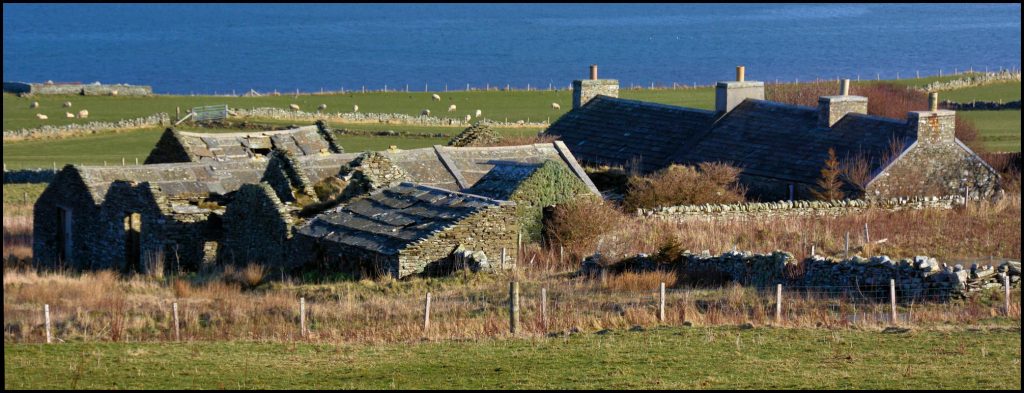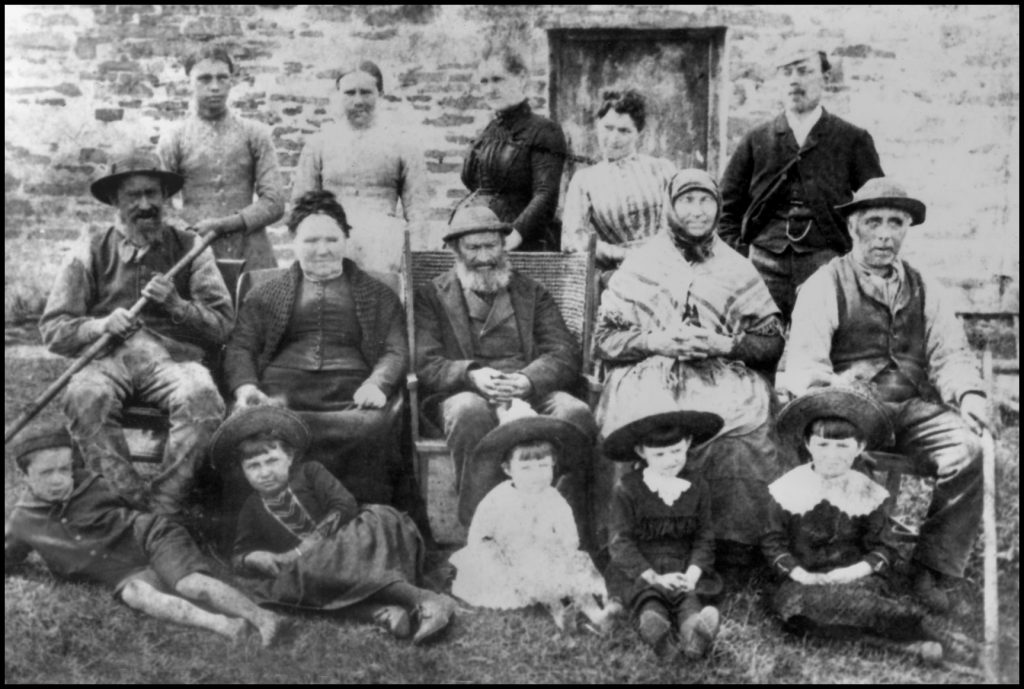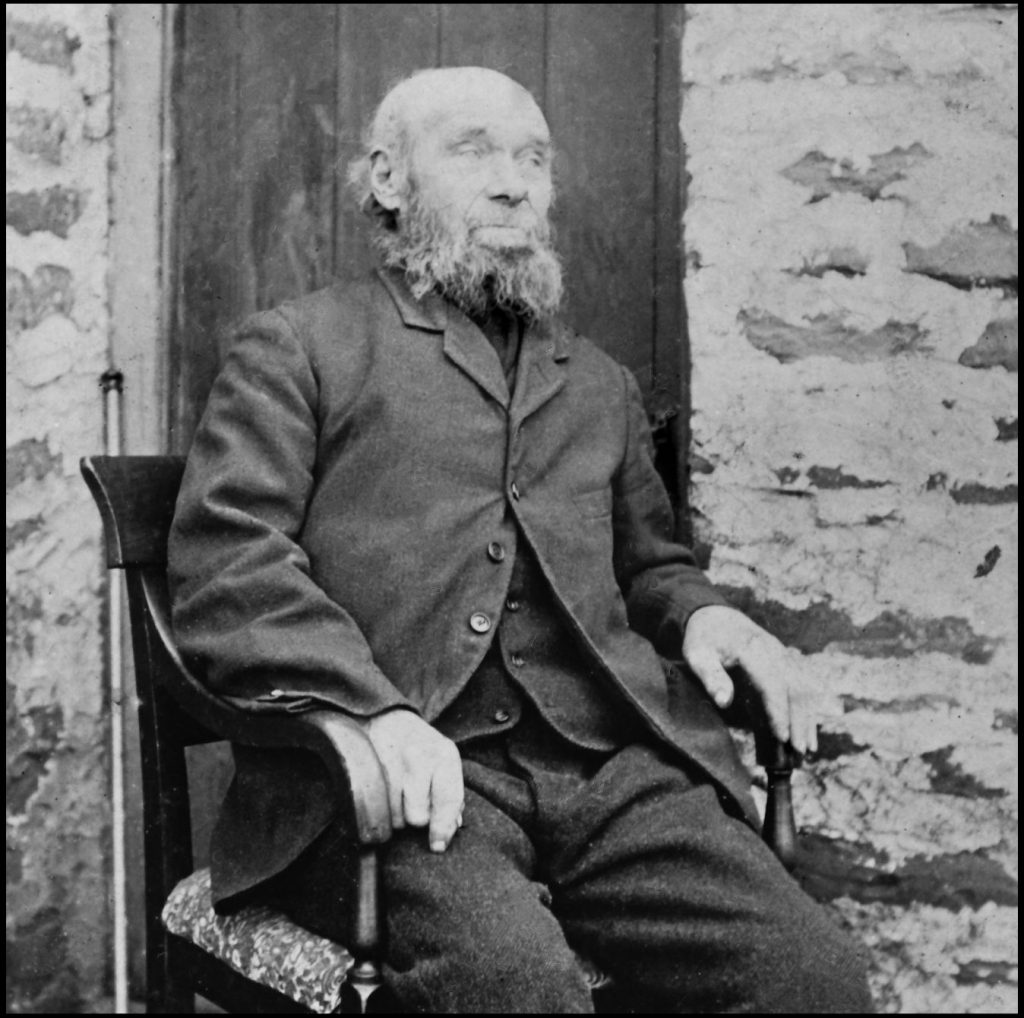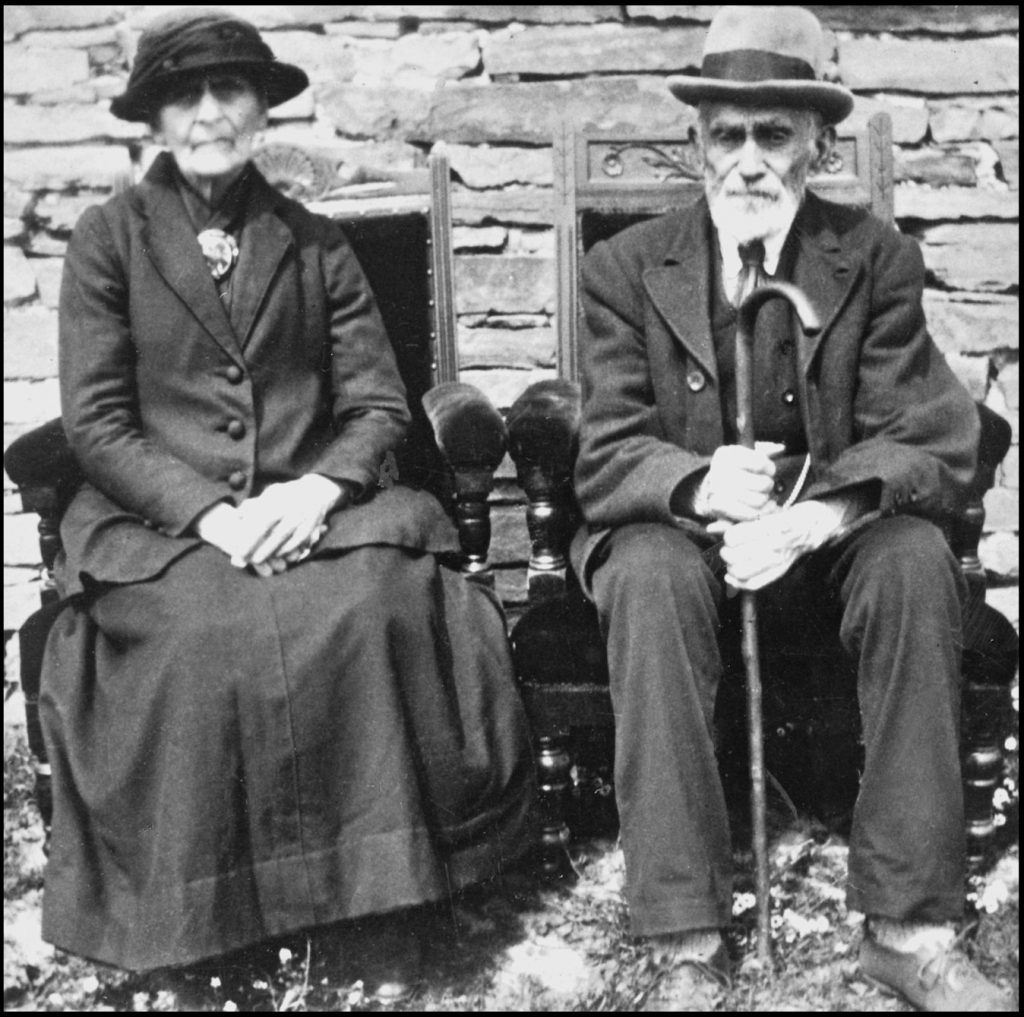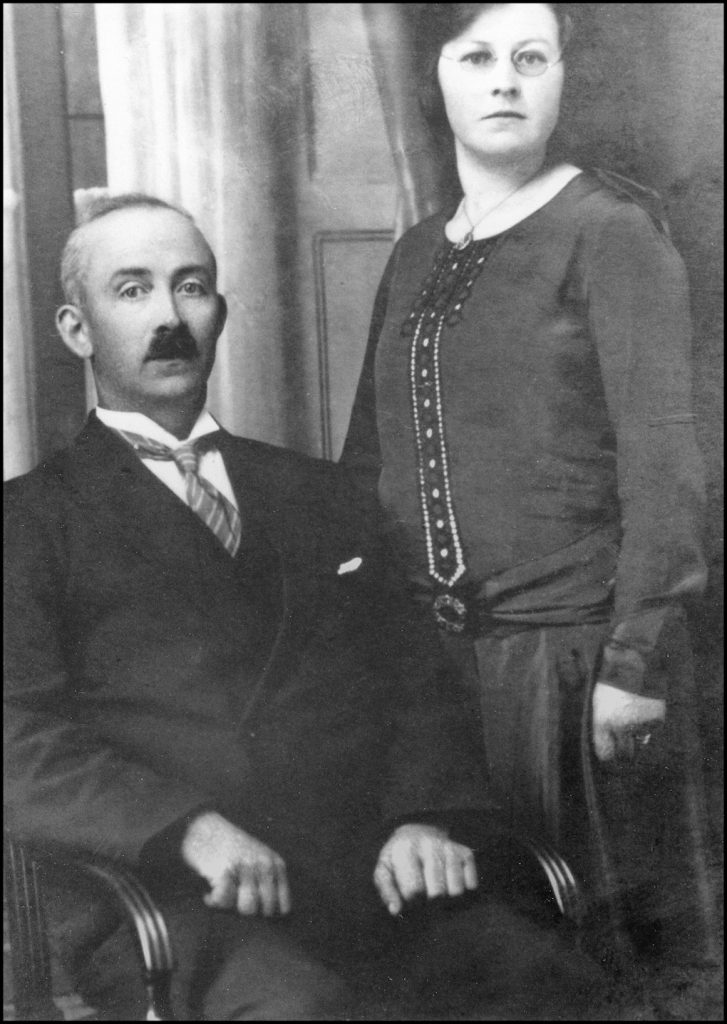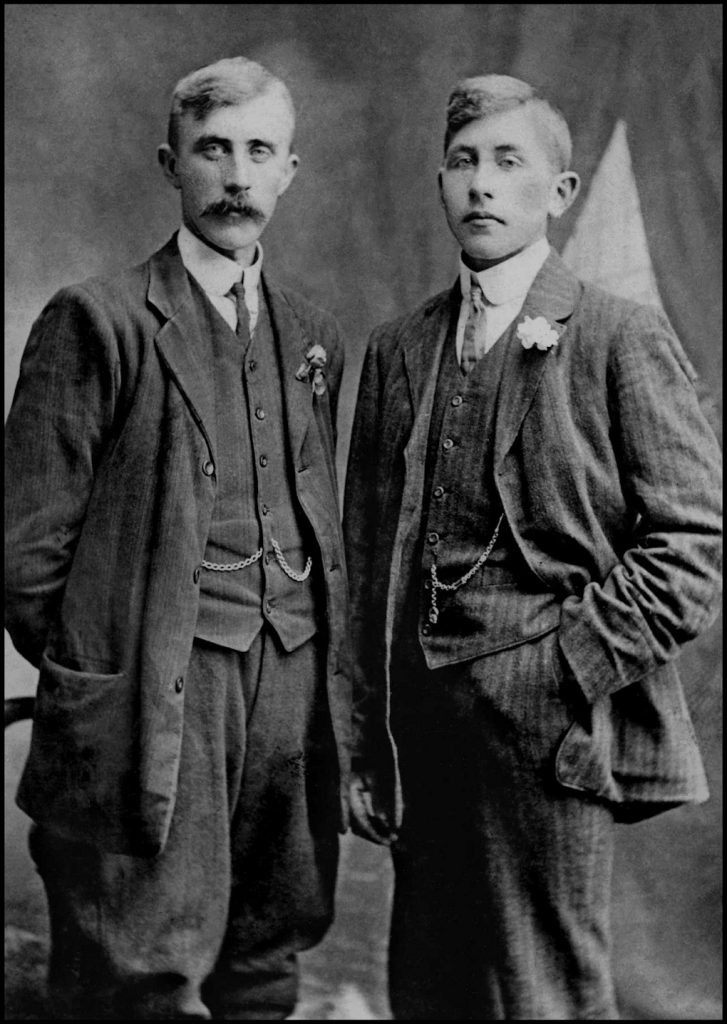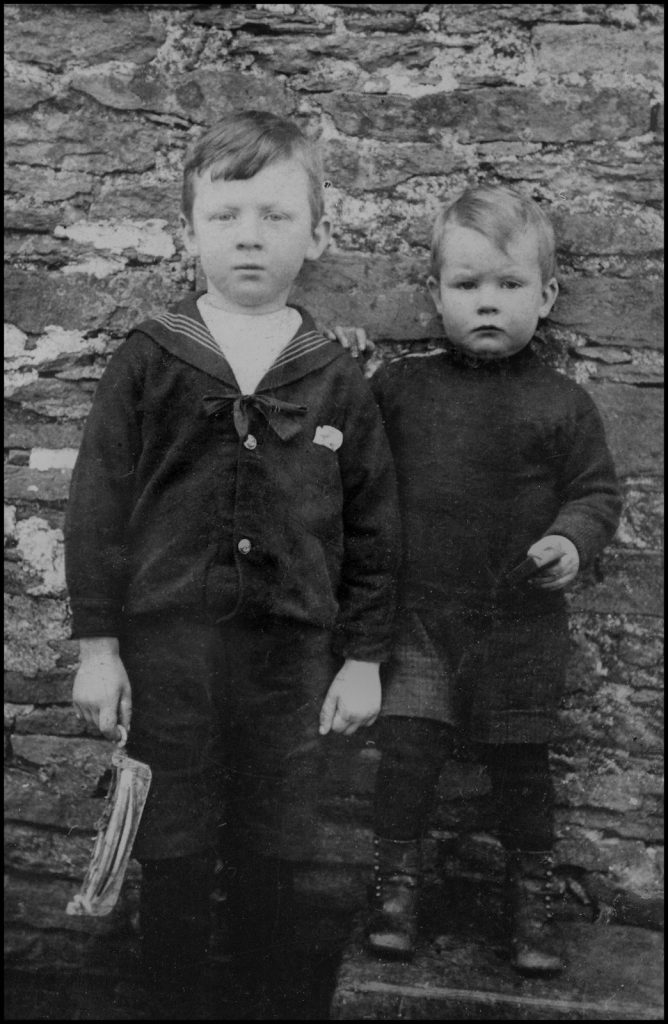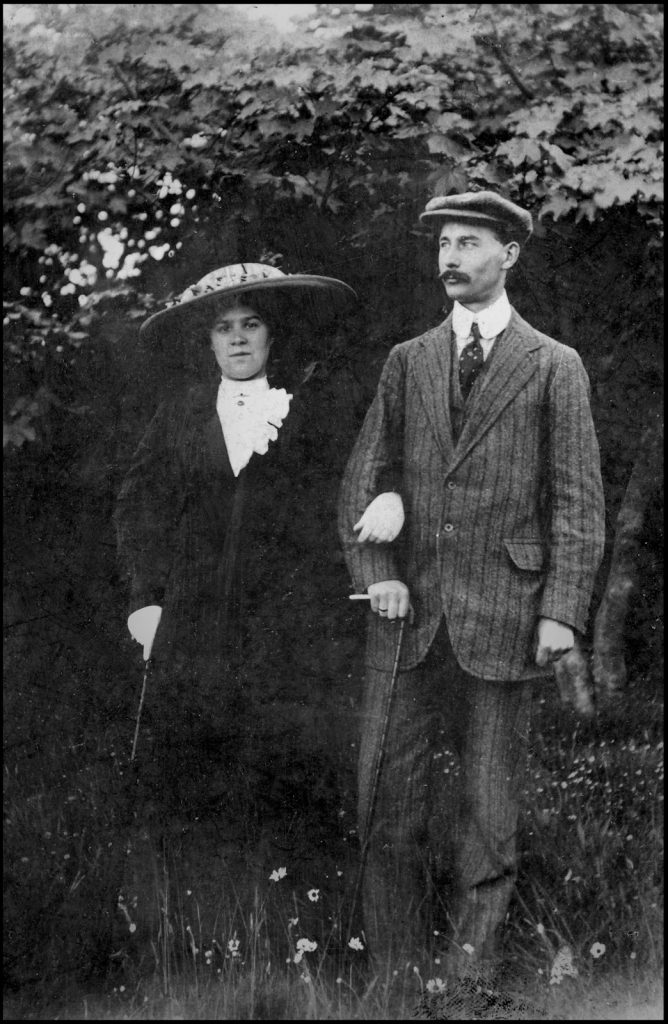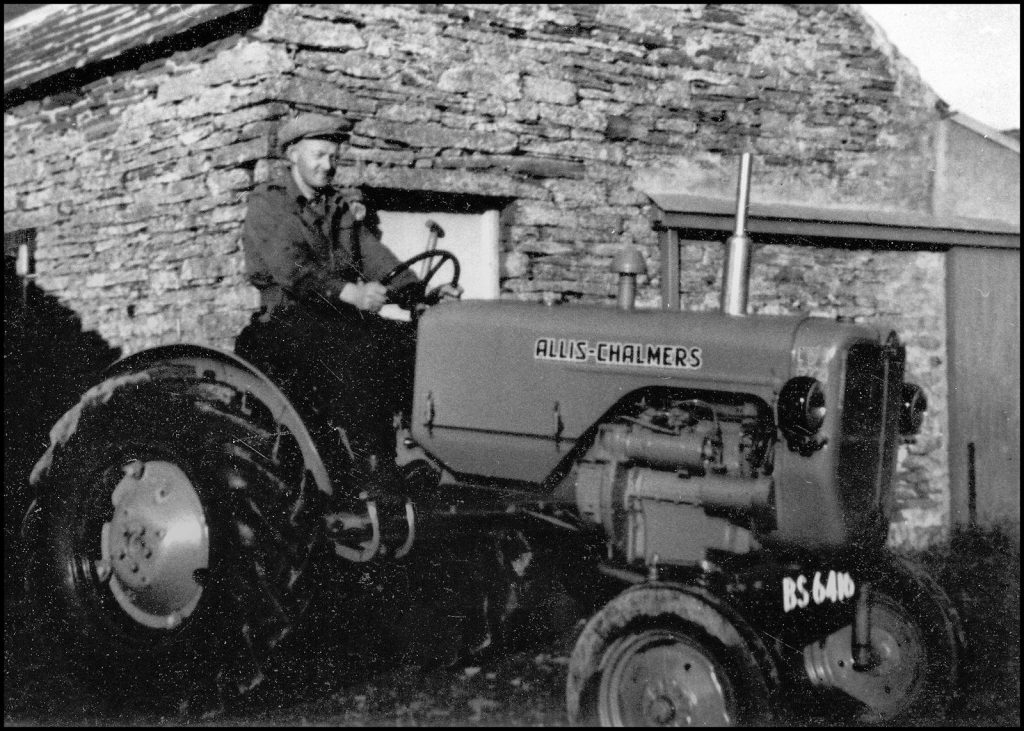According to Hugh Marwick’s 1947 publication ‘The Place-Names of Rousay,’ our knowledge of the tunship settlements in Orkney is largely derived from the old Rentals. The farm of Knarston is first mentioned in the 1503 Rental, primarily a tax-roll showing the various skats or taxes due to the Earls or Bishops of Orkney from each farm or tunship, and in addition, in the case of property lands belonging to the earldom or bishopric, the annual rents due from the tenants in occupation.
The land was valued in terms of early Norse money as ouncelands and pennylands. The old Norse silver mark was sub-divided into 8 ounces and in Orkney the ounce was divided again into 18 pennies – the land being valued as urislands (ouncelands) and pennylands – 1 urisland consisting of 18 pennylands.
The 1503 Rental mentions Knarston, which included Avelshay, and formed a 9-pennyland, or half-urisland. At a later date the lands of the two farms were separated, the Burn of Cruar forming a kind of natural division between them.
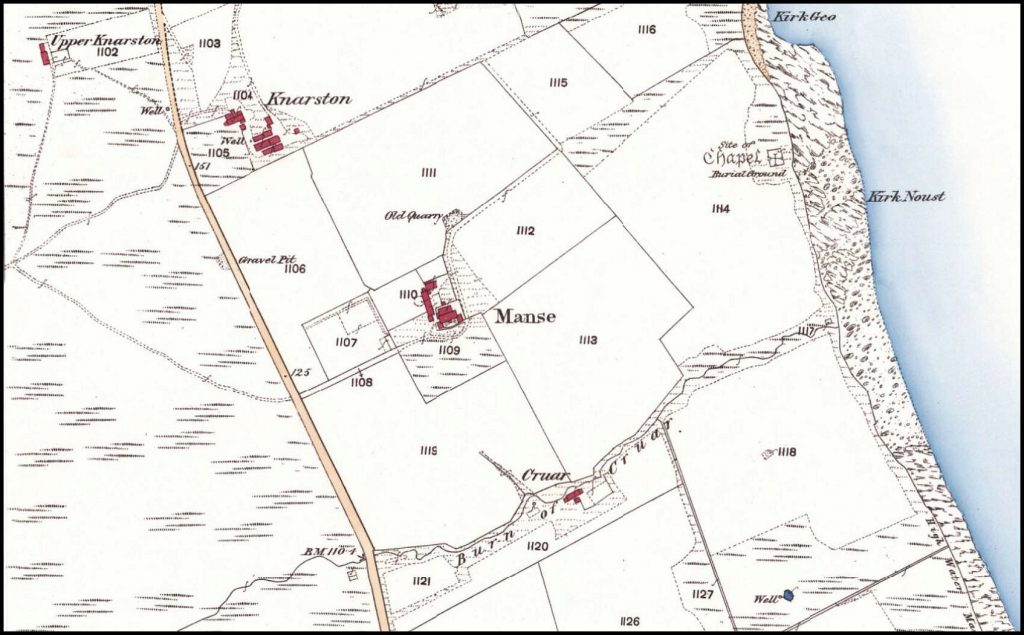
[Reproduced with the permission of the National Library of Scotland]
Knarston was occupied by William Irvine in 1653. Joint tenants in 1733 were Mitchell Balfour and John Yorston, in 1734 William Wishart and John Innes, and in 1739 William Reid and William Yorston. William Craigie was sole tenant in 1800.
In the 1840’s, Knarstane, as it was called in the census, was a busy farm with three families living within its boundaries. Firstly there was 60-year-old farmer James Craigie and his family. In 1808, he married Janet Craigie, daughter of Hugh Craigie and Janet Marwick, who was born in 1789. They raised a family of five children: James was born on September 30th 1809; Janet, on January 16th 1811; William, on February 1st 1814; Jean, on April 13th 1816; and Margaret, who was born on April 29th 1829.
James, born in 1809, was a fisherman, and he lived at Knarstane with his wife Elizabeth Mainland, daughter of Leslie and Jean Mainland of Avelshay, who was born on April 8th 1813. They had four children: William, born in March 1841; Martha, in January 1846; Margaret, in November 1850; and Jane, who was born in May 1856.
The other tenant at Knarstane at this time was 35-year-old farmer John Gibson. He was the son of John Gibson and Giles (Julia) Grieve of Broland, and he was born on October 17th 1802, at Hurtiso. On February 9th 1830, he married Isabel Craigie, daughter of William Craigie and Sicilia Banks of Knarston, and she was born on June 22nd 1804. They had two children; Sicilia, born on January 28th 1832; and John, born on March 28th 1833.
On March 20th 1835, John married Janet Craigie, daughter of James and Janet Craigie, born in 1811 and mentioned three paragraphs above. Between 1836 and 1853 they raised a family of eight children, six boys and two girls.
By 1851 James Craigie and his family had moved to nearby Cruar. His parents, James and Janet Craigie, were living at Upper Knarston with their 22-year-old daughter Margaret who was employed at home, and John Gibson and his family lived at Knarston itself.
On April 20th 1855, John remarried. His third wife was 43-year-old Mary Mainland, daughter of William Mainland and Alison Rendall of Testaquoy, Wyre. John died the following year aged 54, and Mary returned to Testaquoy on the island of Wyre, where she later died in 1889.
James Gibson was the next tenant of Upper Knarston. He was the son of John Gibson and Janet Craigie of Broland and later Knarston, and was born on May 29th 1836. In 1858 he married Margaret Sinclair of Scalloway in Shetland and they had three children; James, born on October 14th 1859; John, who was born on October 14th 1861 but died in infancy; and Mary Janet Craigie, born on August 12th 1865. James Gibson was 34 years of age when he died in 1870. In the census of 1881 his widow Margaret was described as a 49-year-old agricultural labourer, and son James was a 21-year-old stonecutter – daughter Mary having died in 1879 at the age of 14.
In 1861, Knarston was occupied by two of John Gibson’s sons, John and James, and also by Margaret, the daughter of James and Janet Craigie, and her husband Simpson Skethaway. John Gibson junior was a farmer and he married Jane Mainland in 1859. She was the daughter of William Mainland and Betsy Reid of Banks in Sourin, who was born on July 5th 1837, and between 1860 and 1872 they had seven daughters.
Margaret Craigie, daughter of the previously mentioned James and Janet Craigie, was born on April 29th 1829, and she married Stronsay man Simpson Skethaway on December 1st 1853. Born on September 23rd 1823, Simpson was the son of school teacher Scollay Skethaway and Cecilia Scott, who lived at St. Salvator, Stronsay, and he came to Rousay as a farm servant at the Glebe, which was farmed by James Gardner, the Minister at that time. Simpson and Margaret had twin daughters; Janet (Jessie) and Lydia, born on December 26th 1853, and another daughter christened Margaret Jane, born on October 20th 1868.
Simpson Skethaway and John Gibson were joint tenants of Knarston. Each tenant had his own stock but the labour and everything else invested in the farm were shared equally as were all the crops at the end of the harvest. At first sight, such an arrangement would seem to be fraught with difficulties and bound to give rise to frequent disputes. There must have been a large measure of goodwill and friendship that overcame any difficulties encountered for the arrangement outlived both Skethaway and Gibson and continued under their heirs well into the 20th century.
A Royal Commission, headed by Lord Napier, was set up by the government in 1883 to look at the conditions of crofting and crofters in the Highlands and Islands of Scotland. When the Commission sat at Kirkwall a great many complaints came from crofters in Rousay where the laird, General Burroughs, had been operating a harsh policy of steadily increasing rents.
Among the complainants were Skethaway and Gibson. Burroughs argued that their farm, Knarston, nearly 80 acres in size, was too large to qualify for consideration as a croft. The tenants maintained that it should not be looked at as one farm but as two crofts. They were asked if they paid the rent jointly or separately. They replied that they paid separately and that they had receipts to prove it. However, the receipts were in Rousay and it became clear to them that a decision in their favour would depend on production of these documents.
That night Simpson Skethaway, who was then 60 years of age, rowed out to Rousay, collected the receipts, and rowed back to Kirkwall, a round trip of 28 miles. When the Commission met in the morning for its final sitting the co-tenants produced the documents and won a decision in their favour. That decision later earned them a welcome reduction in rent. A Valuation Roll of 1875-76 revealed the annual Skethaway/Gibson Knarston rents standing at £28.15s.0d. each. A subsequent valuation after the Commission’s meeting showed them paying the lesser sum of £17.16s.0d. each per annum.
Simpson, born in Stronsay in 1823, was 87 years of age when he passed away at Knarston – at 11 pm on February 4th 1911. His death certificate revealed the cause of death: ‘senile decay – been weakening for years’.
Simpson’s youngest daughter Maggie Jane, born on October 20th 1868, married John Corsie, Brendale, in 1885, and they lived and worked at Knarston. They had thirteen children: Margaret Jane (known as Maggie Jean) who was born in 1886; Agnes, in 1887; John, in 1889; Janet, in 1890; William, in 1892, but died six months later; Ann, who was born in 1894; a second William, born in 1896; Thomas, in 1897; Malcomina (known as Minnie), born in 1901; Peter, in 1902; Lizzie, in 1902; Cecilia (known as Cilla), in 1904; and George, who was born at noon on July 1st 1906. Complications during the birth led to the death of Maggie Jean, dying of ‘cardiac collapse’, at the age of just 37.
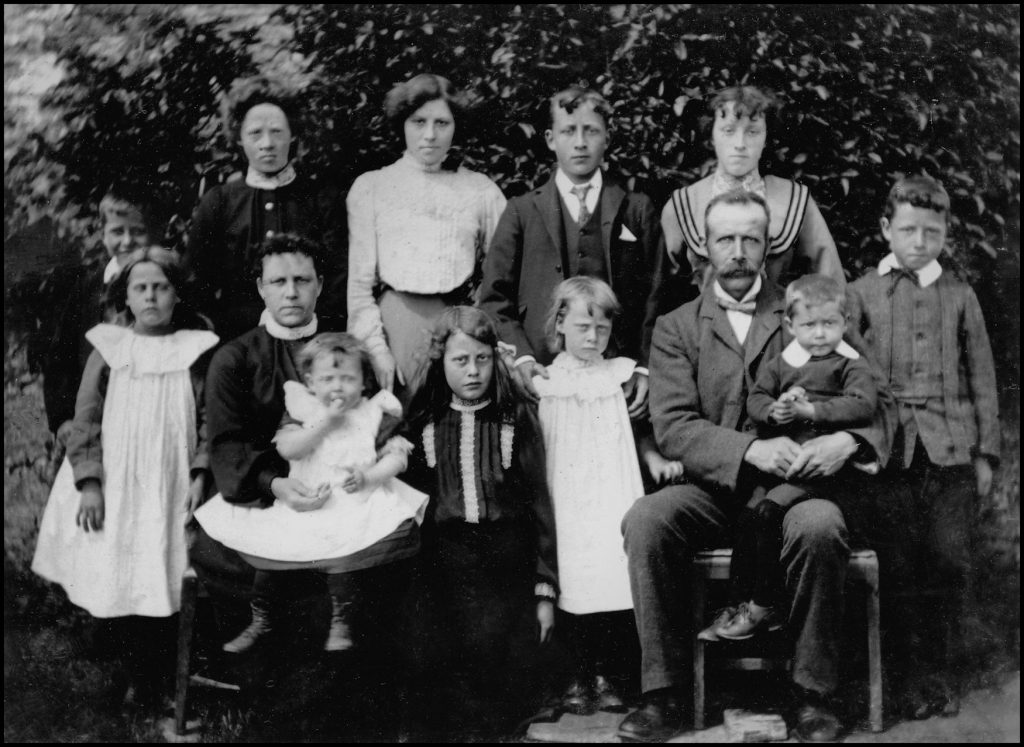
Back row, from the left: William, Janet, Maggie Jean, John, and Agnes. Front row:
Lizzie, Maggie Jean with Cilla, Ann, Minnie, John with Peter, and Tommy.
At the time of the 1911 census John Gibson was 78 years of age. His wife Jane was 73, and they had been married for 51 years, seven months and three days. Daughters Mary-Jane (41) and Jessie (38) ‘assisted in work on the croft’, grandson John Marwick (25) was employed as a horseman on the croft, and with him was his wife Ann and their six-month-old son John. Widower John Corsie was 44 years of age by then, and helping him on the croft were daughter Janet and son William, aged 20 and 15 respectively.
Jane Gibson was 85 years of age when she died in 1922. Husband John was in his 91st year when he passed away two years later. Knarston was then occupied by Harry Sinclair and his family. Christened Harry Hourston Sinclair, he was the son of James Hugh Sinclair, Newhouse, and Margaret McKinlay, Sound, Egilsay, and he was born in October 1889. He married John Corsie’s daughter Janet in 1911, and they had two sons, Gordon and Harry. Parents and children are pictured below.
[All black and white photos courtesy of the Tommy Gibson collection]
Wallhouse is a vanished house in Sourin. On December 1st 1817, Archibald Sinclair in Swandale “66 years of age come the 1st of May next,” and ancestor of most of the Rousay Sinclairs of today, when giving evidence in a lawsuit, declared he was born at Wallhouse “in the neighbourhood of the Manse that is in Sowric.” The site is now unknown, but it was probably near the Well of Oro on the farm of Knarston.
The Hammers of Knarston is the name given to a short stretch of coastline below Knarston consisting of rocks projecting into deepish water, and providing, in the old days, excellent opportunities for sillock fishing by the use of ‘pock-nets.’ Here vast quantities of these fish used to be caught in late autumn, and their livers, when ‘braithed’ or melted down, provided oil for use in old-time ‘cruisies’ or ‘koly-lamps’ before the introduction of paraffin.
